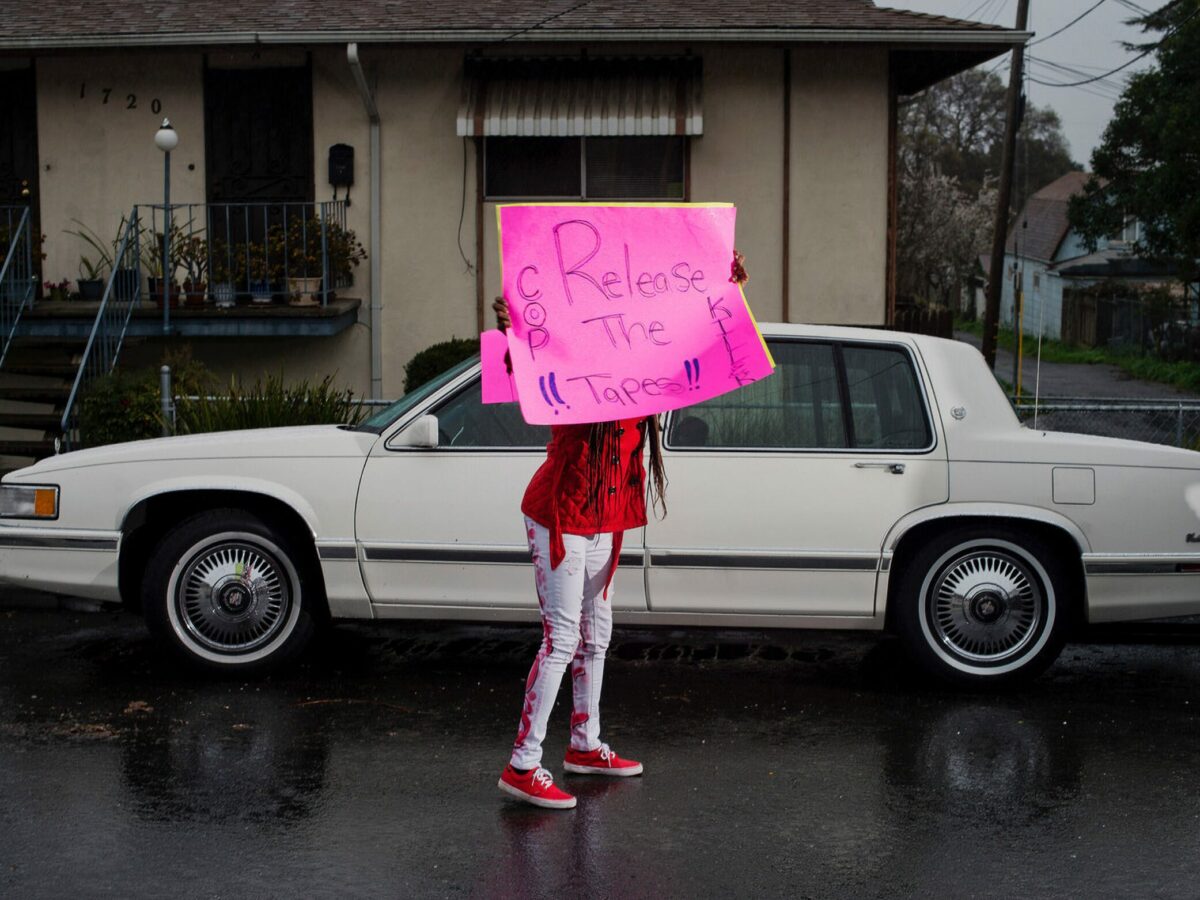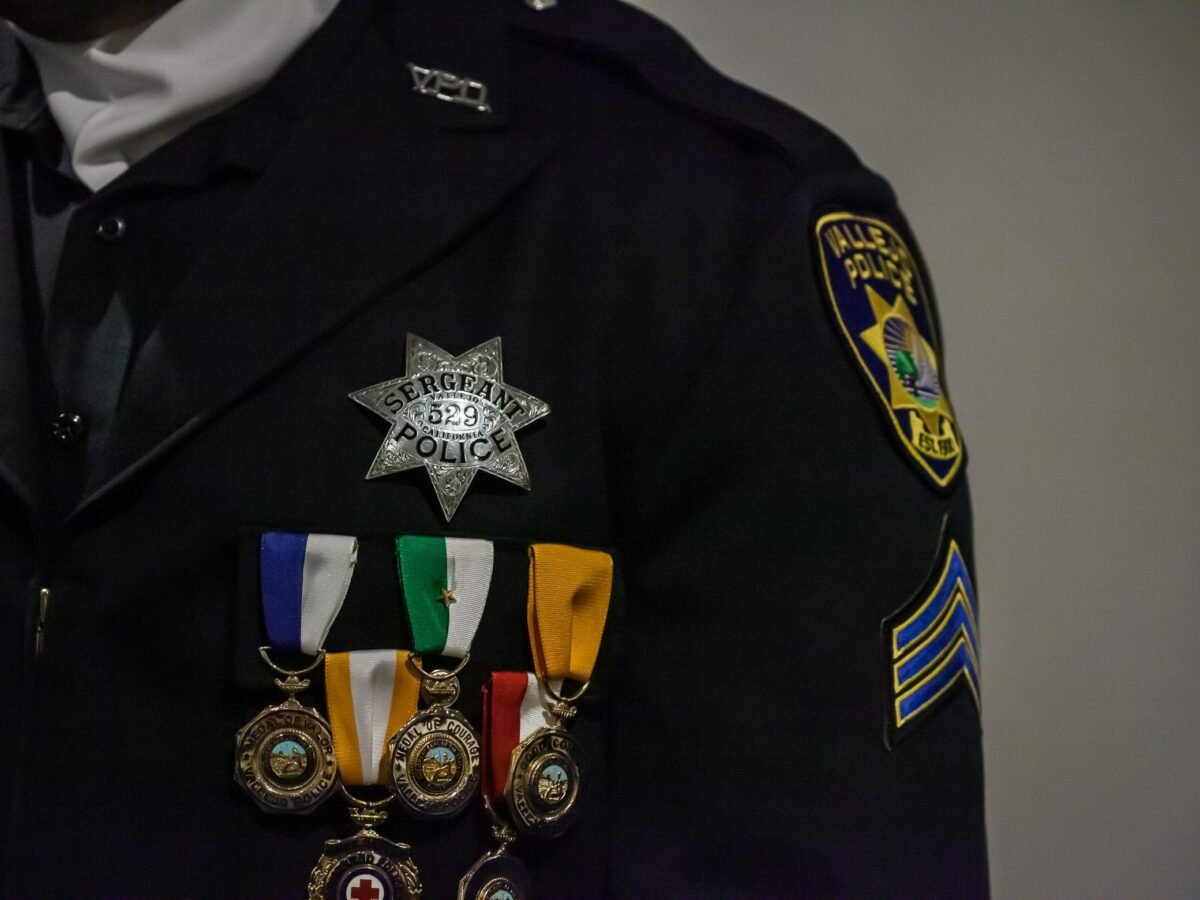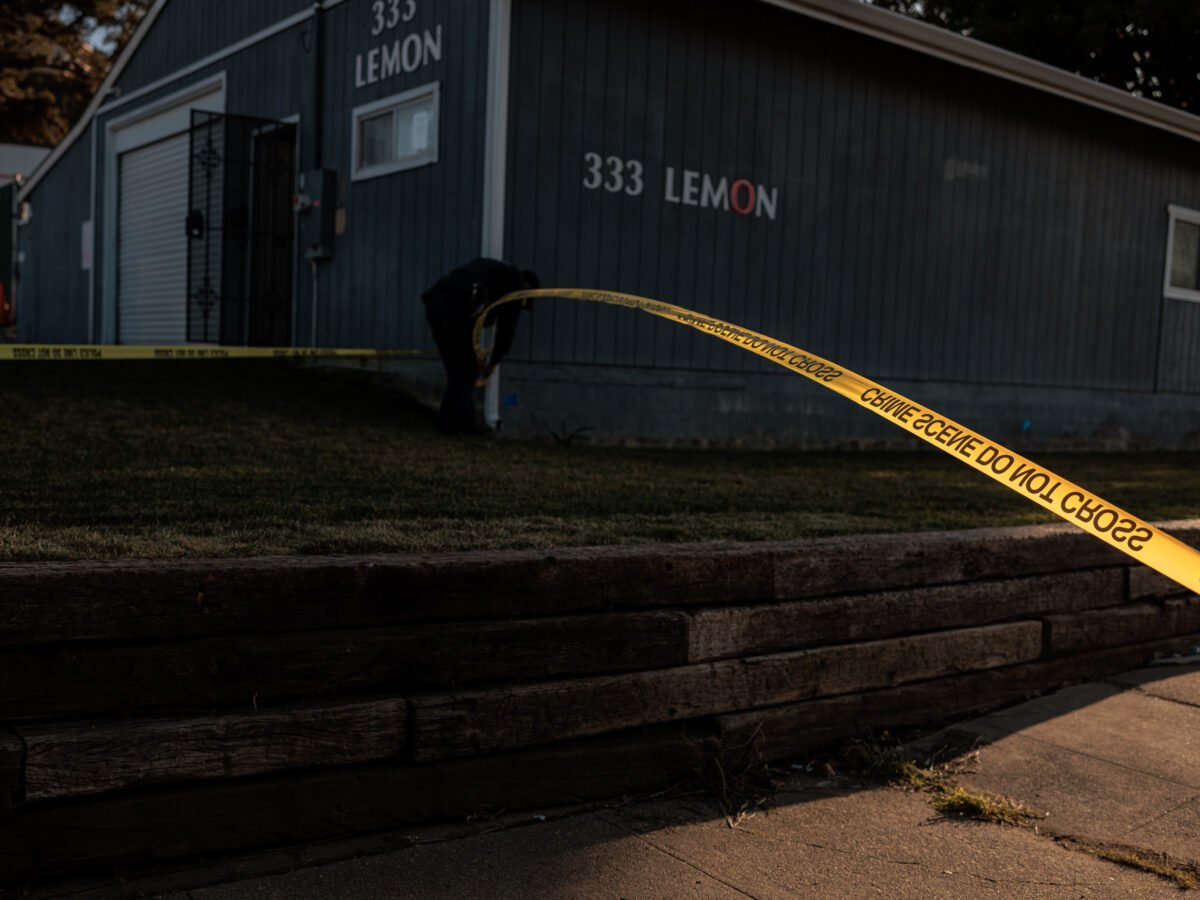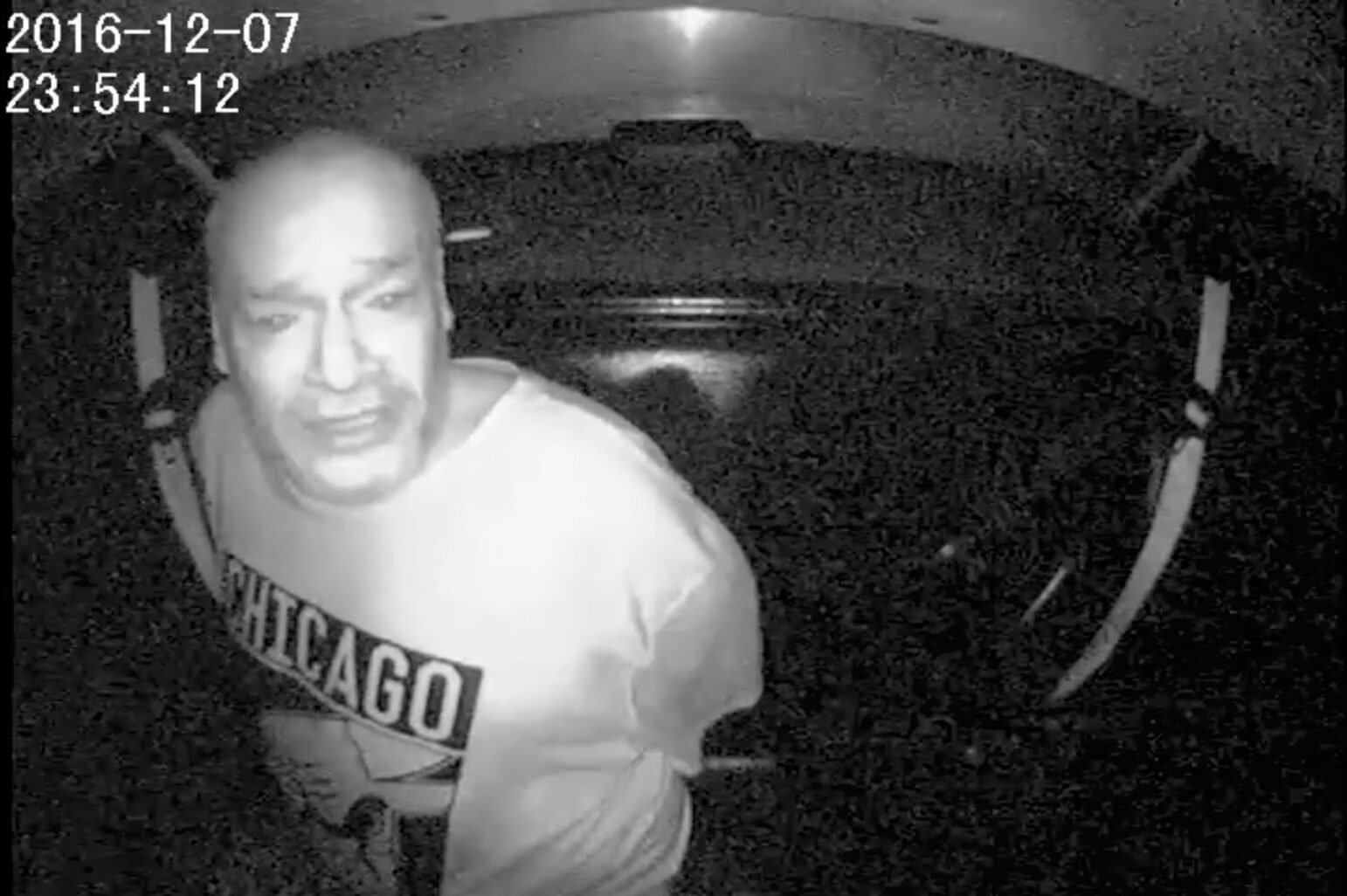
Darryl Mefferd was panting and sweating when he encountered Vallejo police officer Jeremy Callinan in the Sutter Solano Medical Center parking lot. Although it was a rainy and cold December night, he slipped his arms out of a baggy black jacket and waved them around, saying something about epilepsy and operations and people recording him.
Callinan told Mefferd to calm down and squeezed his hands behind his back, locking them together with handcuffs.
“You’re not going to jail, but I’m not going to have you yelling and screaming at me,” Callinan said, according to new body camera footage of the December 2016 encounter released by the Solano County District Attorney’s Office in response to a public records lawsuit by Open Vallejo. “Nothing’s going to happen to you.”
But the handcuffs only made Mefferd more agitated. The 49-year-old Vallejo native had just walked away from the emergency room, according to his medical records, eight hours after he checked himself in for alcohol withdrawal. Doctors had not yet finished treating him for symptoms relating to alcohol and methamphetamine use, including hallucinations, agitation, and a rapid heartbeat. Now, as Callinan pushed him into the empty backseat of the police cruiser, Mefferd seemed to believe there were people inside the car who would hurt him.
“Please, don’t put me back there, man,” he said. “Please.”
Mefferd was rocking back and forth when his sister Cindie Mefferd pulled up behind the police car. She asked Callinan to drive Mefferd to their mother’s home, but the officer refused and said he was transporting Mefferd to a mental health crisis center.
Mefferd kicked and yelled and carried on rapid conversations with himself during the 15-mile drive to the Fairfield facility. He struggled against his handcuffs. “Take me home,” he said.
Callinan pulled his patrol car up to the crisis center entrance shortly before midnight. He left the engine running and windshield wipers on as he removed Mefferd from the back seat. But after taking less than a dozen steps, Mefferd turned toward Callinan and said, “You’re going to fucking kill me, aren’t you,” then stumbled to the ground.
Callinan tried to lift Mefferd at least twice, telling him repeatedly to stand up and calm down. But when Mefferd instead writhed on the wet sidewalk and begged for help, the officer determined that he was being uncooperative, according to body camera footage. Callinan later told investigators that he rolled Mefferd onto his stomach, held his wrist in a pain compliance technique known as a “wrist lock,” and pushed down on his cuffed hands to gain control, according to a recording of the interview released by the district attorney’s office.
Callinan held Mefferd down in that position as he called the crisis center and asked them to send a security guard outside. A receptionist refused. Meanwhile, after roughly two minutes on the ground, Mefferd groaned and screamed in distress, according to the footage. Then, he squeezed out his final words.
“I can’t breathe,” he said. “Sorry. Sorry. Sorry. I can’t breathe.”
Callinan hung up the phone. He did not seem to notice that Mefferd now lay motionless underneath him, moaning and snoring. Both are symptoms of agonal breathing, a reflex triggered by an acute lack of oxygen, and a sign that someone is near death.
“Stand up,” the officer repeated three times. “Hey, you want to go home?”
There was no response.
‘Like a hoarder’s house’
More than eight years later, the city of Vallejo stands alone in refusing to release any records from the killing. In recent months, four other agencies have turned over investigative records to Open Vallejo, including copies of Vallejo police reports and body camera footage from multiple officers on the scene. Together, the records illuminate key details surrounding Mefferd’s death on Dec. 8, 2016, which the city of Vallejo has never publicly acknowledged.
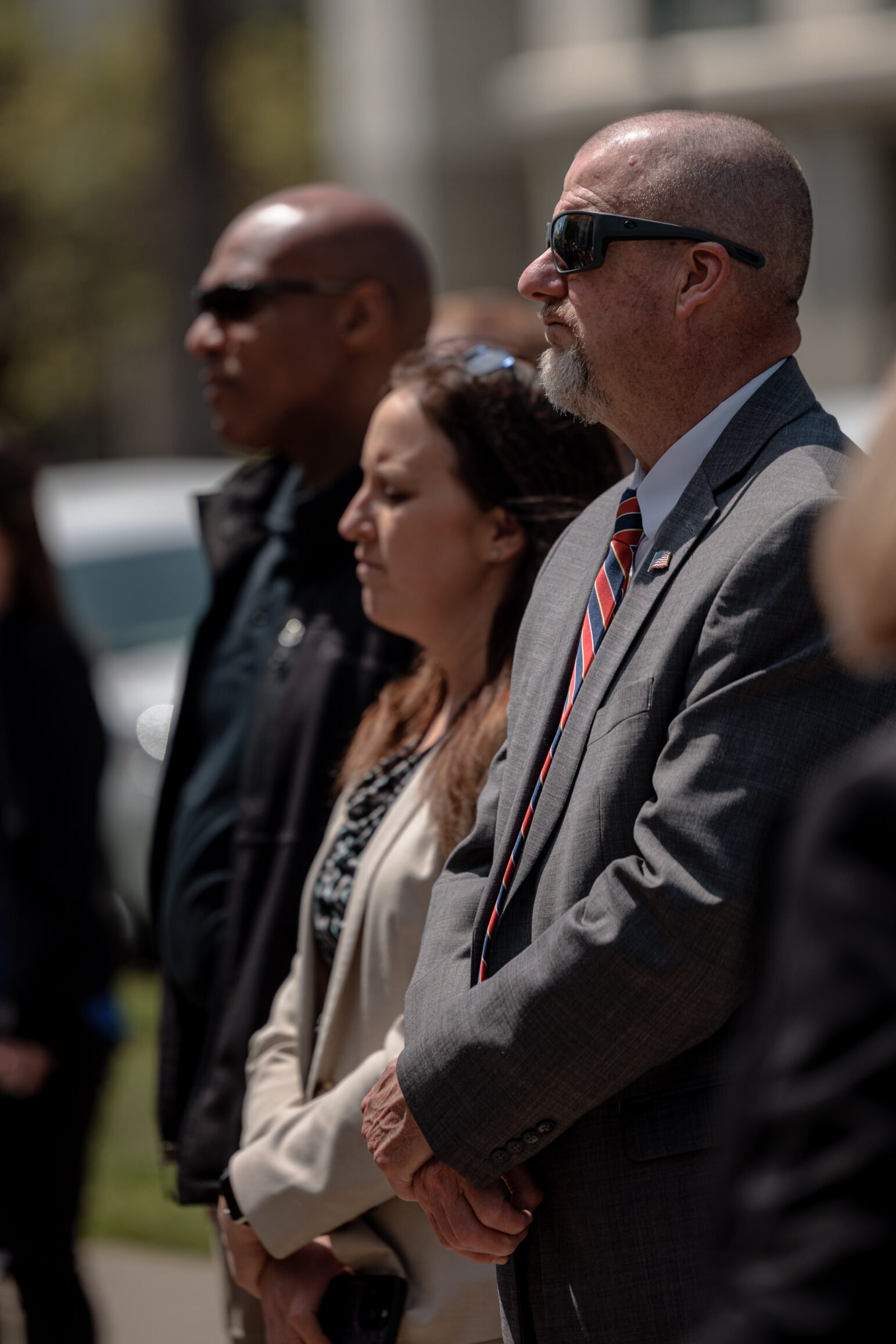
In November, the Solano County District Attorney’s Office released to this newsroom more than 40 minutes of footage from Callinan’s body-worn camera and in-car camera from the night of the incident, as well as hours of surveillance footage from the scene; more than three hours of audio recordings, including dispatch communications and interviews with Callinan, witnesses, and Mefferd’s family members; and a 577-page binder of investigative reports and autopsy records.
The Fairfield Police Department, Solano County Sheriff’s Office, and California Department of Justice have also released records from the Mefferd case in the months since Open Vallejo first uncovered the fatal incident in an investigation published last June, in which three experts said they would have ruled the death a homicide. That story was based on the public records available at the time, interviews with family members, and a confidential source with knowledge of the investigation who was not authorized to speak publicly about it.
The release of body camera footage follows a years-long push for the records by Open Vallejo, which filed a public records lawsuit in December 2023 against Solano County District Attorney Krishna Abrams, Sheriff Tom Ferrara, and the agencies they lead.
Abrams, who ultimately reviews all fatal incidents involving law enforcement in Solano County for potential criminal charges, had only released records of five recent police shootings in response to numerous public records requests Open Vallejo had filed since 2021.
But during the course of the public records litigation, Deputy Chief District Attorney Bruce Flynn made a startling admission: a district attorney investigator had since discovered boxes of evidence from more than a dozen police shootings and other in-custody deaths dating back to 2013.
Flynn told lawyers representing Open Vallejo during an August 2024 deposition that Lt. Chuck Renfro stumbled across the records in a back area of the agency’s Fairfield office sometime last year. There he found 14 thick investigative binders sitting unmarked and forgotten among rows of cluttered cubicles.
Inside the binders were DVDs with surveillance and body camera footage, reams of investigative reports, and other evidence from the deaths of five men killed by Vallejo police: Mefferd, Timothy Walker, Phillip Conley, Angel Ramos, and Ronell Foster.
“Our office is filled with boxes everywhere. It looks like a hoarder’s house,” Flynn testified. “He just happened to find these, and then he took steps to make sure that they were preserved.”
Flynn testified during the deposition that he thought his agency had returned the years-old cases to the local departments that originally handled each investigation, but “later found out that that was incorrect.”
In an email sent to Open Vallejo on March 12, District Attorney’s Office spokesperson Monica Martinez said the agency did not realize it possessed the Mefferd case records, but turned them over “as soon as it was discovered that our investigation bureau had additional reports.”
In a separate public records lawsuit, Open Vallejo sued the city of Vallejo in 2021 after officials spent years delaying and ignoring the newsroom’s requests for police records. Among other items, Open Vallejo sought audiovisual records and documents from incidents in which the “use of force by a peace officer … against a person resulted in death, or in great bodily injury,” which are disclosable under state law.
Solano County Superior Court Judge Stephen Gizzi ruled that Open Vallejo had prevailed in the case in May 2023 and ordered the city to finish releasing all of the disclosable public records by that November.
But the city has yet to release any records from the Mefferd case, which it argues fall outside the scope of the order. In a letter to Open Vallejo sent last January, Assistant City Attorney Katelyn Knight asserted that the injuries found on Mefferd, including abrasions across his body, a contusion on his forehead, and laceration marks on both wrists, “do not meet the standard for Great Bodily Injury.”
In December, Open Vallejo asked Judge Gizzi to order that the city conduct another search for police incidents resulting in “great bodily injury,” and disclose the related records. In court papers, this newsroom argued that the Mefferd case is one of several examples showing that Vallejo “has applied a far too restrictive standard in determining what qualifies as a GBI.”
Spokespeople for the City of Vallejo and Vallejo Police Department did not respond to requests for comment on this story.
‘Don’t die on me’
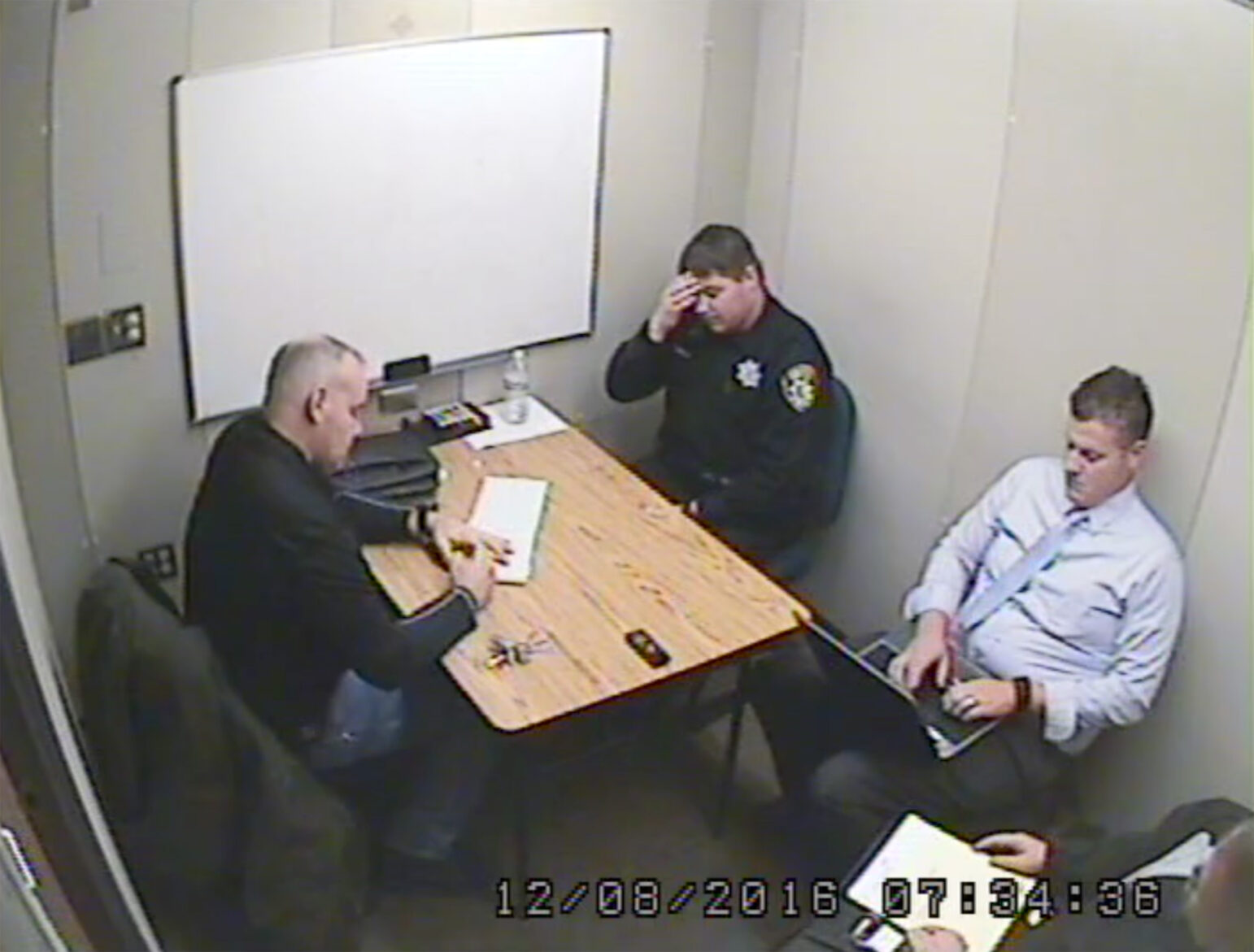
The facts surrounding Mefferd’s killing are contained in the very records Vallejo seeks to conceal.
After Mefferd fell silent on the ground, Callinan called for police backup — a process that took more than two minutes — while holding him in the prone position.
The officer did not call Vallejo dispatch with his portable radio because he knew there was a weak signal from his location. Instead, with cold hands, Callinan pulled out his phone and Googled the Fairfield Police Department. He waited for the page to load, clicked on a seven-digit phone number, and got stuck in the phone tree before reaching Fairfield dispatch, investigative records obtained by Open Vallejo show.
“Hey, it’s Callinan from Vallejo PD. Can I get a cover unit to Crisis? I have one on the ground combative,” he said, according to newly released dispatch audio from the call. Then, without providing any additional information, he hung up, the audio reveals.
Callinan did not ask for medical assistance, although it had been minutes since Mefferd moved or made a sound, according to his body camera footage.
The footage shows that Callinan continued to hold Mefferd in prone restraint for an additional four and a half minutes while waiting for backup to arrive — a decision contrary to decades of established policing guidelines and even his own training — because he felt that the position gave him “an advantage.”
“I didn’t want to give him a way out,” Callinan later told investigators, noting also that he was cold and tired by that point. “I didn’t have to exert any energy to keep him down.”
Callinan later told investigators that he could feel a pulse after his call to Fairfield police and thought Mefferd “might have passed out.”
While Callinan’s clothing largely obstructs his body camera’s field of view, the video appears to show the officer straddling Mefferd with his right knee touching the pavement on one side and left foot propped against the ground on the other side.
Fairfield officers Andrew Decker and Camille Langi pulled into the crisis center parking lot just over four minutes after Callinan’s call. Both officers had been told there was a physical altercation, but as they approached the scene, they saw Mefferd lying facedown in handcuffs and no signs of active resistance, according to their recorded interviews released by the Fairfield Police Department and the Solano County District Attorney’s Office.
“They weren’t in a struggle or anything like that,” Langi told investigators.
Langi told investigators that Callinan was kneeling beside Mefferd and holding him down by his arm when she arrived. Decker, who arrived seconds after Langi, described the scene in different terms. He said the Vallejo officer was “on top of him or had a portion of his body on top of him,” according to the interview recording.
Decker immediately felt Mefferd’s wrist for a pulse. Finding none, he called for a medic and suggested they start CPR, according to the body camera footage. The officers then rolled Mefferd on his back and Callinan began chest compressions.
“Don’t die on me, guy,” Callinan said, according to his body camera footage.

More than three minutes later, paramedic Justin Courter, a supervisor with Medic Ambulance, arrived at the scene. Courter noted that Mefferd looked “a little blue from lack of oxygen,” according to the records. He asked officers to free Mefferd from his handcuffs, which took nearly a minute, and then resumed CPR and other lifesaving efforts alongside more medics from the Fairfield Fire Department. The paramedics then transported Mefferd roughly three miles away to NorthBay Medical Center, where within half an hour, an ER doctor pronounced him dead.
From the scene, Sgt. Gale Hill of the Solano County Sheriff’s Office invoked the regional Officer Involved Fatal Incident Protocol, triggering an investigation that included multiple local agencies, according to case records. Callinan was sequestered and interviewed later that morning by Vallejo police detective Mathew Mustard.
Callinan admitted to Mustard that he had learned about positional asphyxia several years prior to the incident during restraint training at the San Pablo Police Department, where he worked for eight years, according to a recording of the interview.
No records obtained by Open Vallejo show that Callinan, who had been working as a Vallejo officer for less than a year, was ever disciplined in connection with Mefferd’s death. Instead, two months later, supervisors gave him a positive performance review, according to confidential records obtained by this newsroom. He was promoted to sergeant in 2022 and is now a supervisor on the department’s SWAT team. He was never charged with a crime.
Callinan declined to comment for this story and directed questions to Vallejo police spokesperson Sgt. Rashad Hollis.
‘The goal should be to learn’
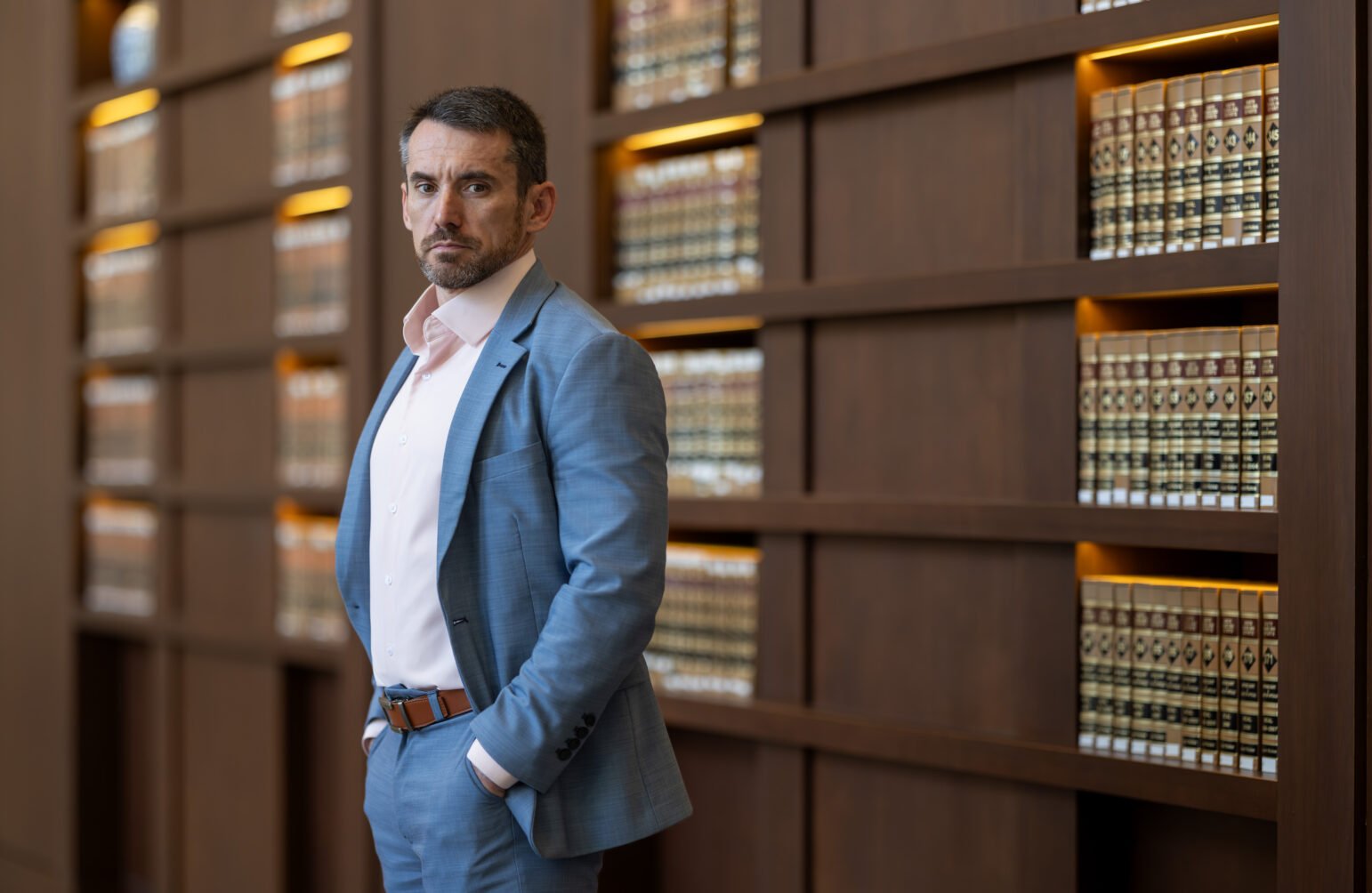
Without accountability after in-custody deaths, police departments can lose the opportunity to learn from incidents or improve their operations to prevent something similar from happening again, said Seth Stoughton, a law professor at the University of South Carolina and a former police officer.
The lack of accountability and transparency in such cases can also harm public trust, he said, which in turn has broader consequences for public safety.
“The goal should be to learn from these incidents and reduce the likelihood in the future,” Stoughton said.
That Mefferd died after being held in prone restraint for several minutes was neither unusual nor unpredictable, according to policing and medical experts.
A recent investigation led by the Associated Press uncovered more than 1,000 deaths in the U.S. between 2012 and 2021 that resulted from police using tactics or weapons that are supposed to be non-lethal. At least 740 of the victims died after officers held them facedown in the prone position, often while applying body weight to keep them still. The deadly force happened in big cities and small towns across America, disproportionately impacting Black people, according to the investigation.
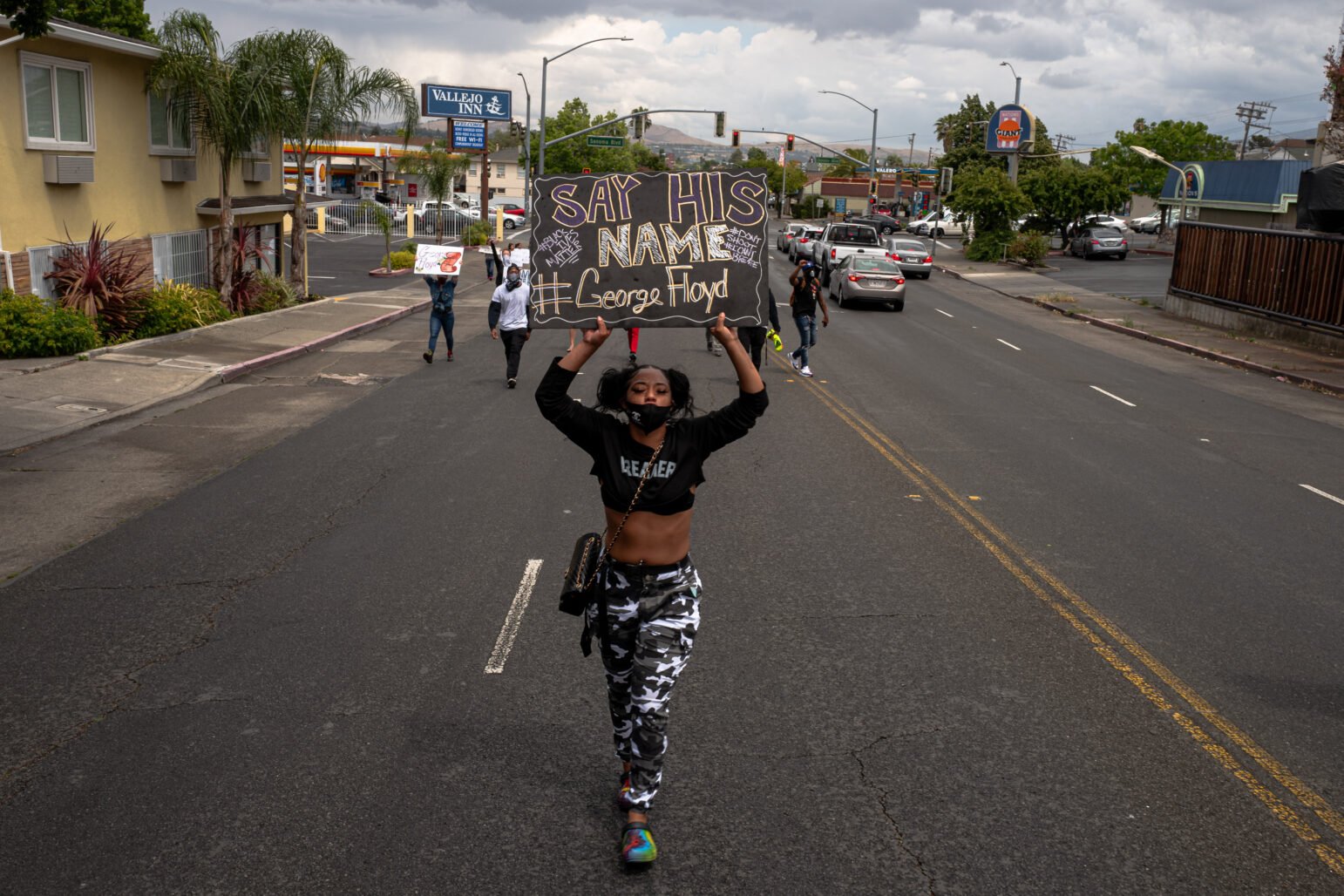
Mefferd’s last words echoed those of many others who died during police restraint, including the high-profile cases of George Floyd, whose murder in 2020 by Minneapolis police sparked nationwide demonstrations, and Eric Garner, who died in 2014 when a New York City police officer placed him in a chokehold. In 2019, police in Colorado placed 23-year-old Elijah McClain in a carotid hold and paramedics injected him with ketamine; two paramedics and one officer were convicted in the killing. Countless others have died in a similar way with little scrutiny or media attention.
In response to the AP investigation, the Police Executive Research Forum released guidance in September on how law enforcement can reduce restraint-related deaths. The guidelines recognize that prone restraint can be deadly and recommend that police remove a person from that position, either placing them on their side or sitting them up, “as soon as possible.”
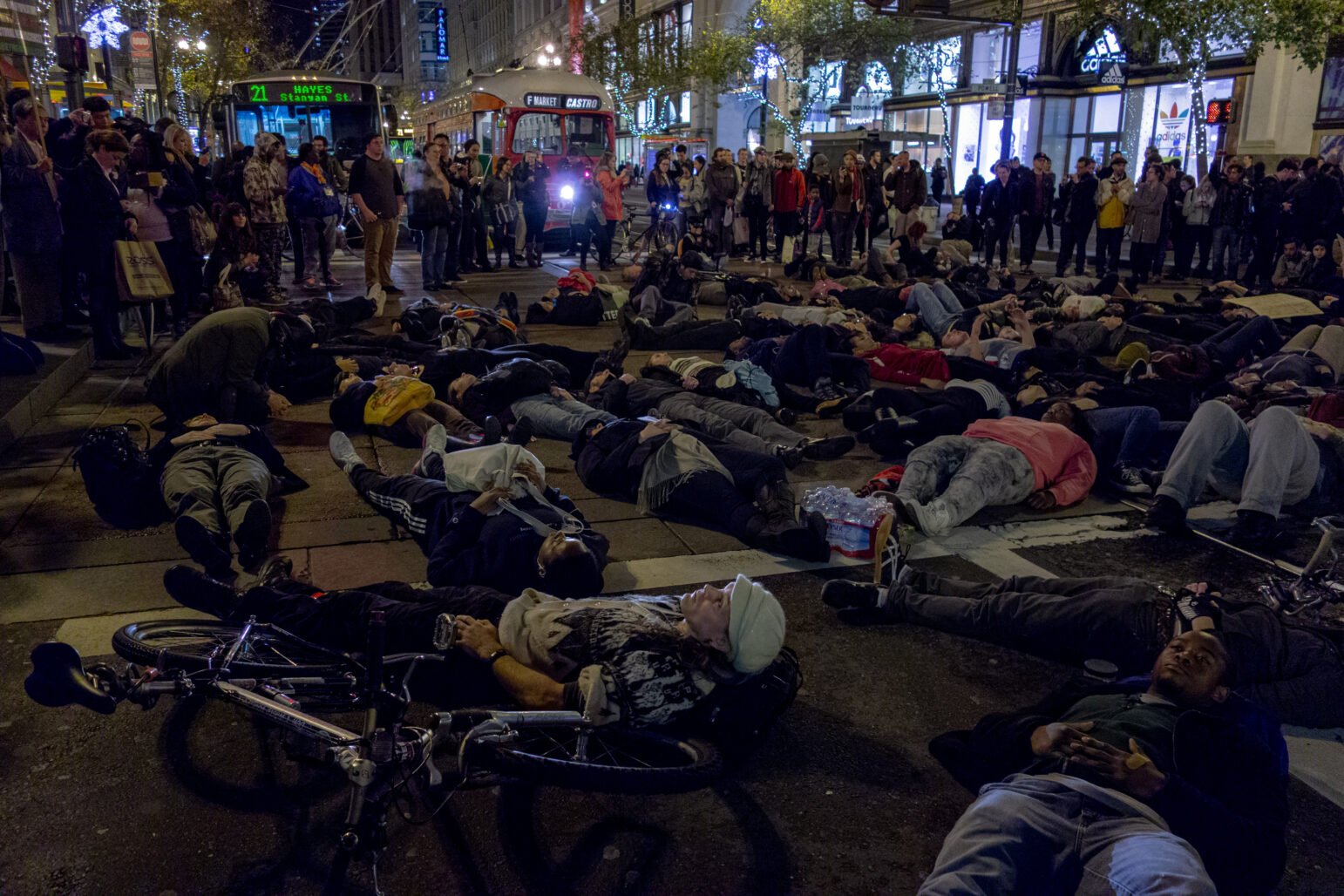
That teaching has been widely incorporated in police training for decades, said Stoughton, the law professor. For example, the U.S. Department of Justice published a bulletin in 1995 with similar warnings about the risks of prone restraint.
“Once someone is handcuffed, you don’t keep them on their stomach,” Stoughton said. “You certainly don’t put them on their stomach and hold them there — even if they are still not fully cooperative, even if they are still resisting to some extent — because of the potential for positional asphyxia.”
Prone restraint can be deadly even if officers do not add their body weight by kneeling or sitting on top of a person, Stoughton said.
“Weight on the back makes it worse, but that’s not necessary to kill someone in this position,” he said. “The risk exists even without that.”

Other factors such as obesity, drug or alcohol intoxication, and physical exertion can increase the risk of death during prone restraint, Stoughton said. Officers often mistake symptoms of a medical or drug-induced crisis for non-compliance with their orders. But new guidance suggests police should approach people displaying certain characteristics — erratic behavior, heavy breathing, and profuse sweating, for example — as patients in need of medical help.
“What modern police training says is when you see someone with this group of symptoms, you should treat that as a medical episode. You get paramedics there, you get them checked out,” Stoughton said. “That collection of symptoms should indicate to an officer — this person is at higher risk of in-custody death.”
In 2023, three years after California’s attorney general intervened over the “number and nature” of the agency’s uses of lethal force, the Vallejo Police Department added a new section to its policy manual titled, “Individuals at Risk for Sudden Death,” which expressly addressed the risks associated with prone restraint.
‘A shock and surprise’

Placing a person on their stomach restricts breathing and blood flow, especially for those who carry extra weight around their middle, said Victor Weedn, a forensic pathologist and adjunct professor at George Washington University and the University of Maryland, Baltimore.
This becomes especially dangerous when someone is experiencing heightened metabolic demands on their body from the stress of a police encounter, a physical struggle with officers, or the effects of stimulant drugs, he said.
That is because people with a high metabolic demand must breathe harder and faster to push carbon dioxide from their lungs. Weedn often explains the science using the example of running on a treadmill: such exertion involves huffing and puffing. When breathing is restricted during that state, the body may experience metabolic acidosis, or a build-up of acid that can trigger cardiac arrest, Weedn said.
“It is natural for us to assume that when people say, ‘I can’t breathe,’ that means they’re not getting any oxygen,” Weedn said. “It’s probably the reverse — it’s probably that they can’t breathe out the CO2.”
Weedn said many officers and paramedics are taught the “myth” that someone is breathing if they are talking. But in fact, he said, it takes very little air to move the vocal cords for speech.
“What people are really saying is they’re in respiratory distress,” Weedn said. “Nobody goes, ‘I almost can’t breathe, I almost can’t breathe.’ That’s ridiculous to think somebody would say that. You and I would both go, ‘I can’t breathe,’ when we’re having such difficulty breathing.”
In a 2022 academic paper, Weedn and co-authors Alon Steinberg and Peter Speth argued that most restraint-related deaths in police custody are due to “prone restraint cardiac arrest” — not “excited delirium,” a controversial medical diagnosis that has since been banned in California and disavowed by top medical associations.
Dr. Venus Azar, the forensic pathologist who conducted Mefferd’s autopsy for the Solano County Coroner’s Office, concluded that he died from acute methamphetamine intoxication. The coroner labeled the case an “accident,” which likely helped the agencies involved in the fatal incident escape liability and negative attention from the public for nearly a decade.
Weedn, who reviewed records from Mefferd’s death investigation at Open Vallejo’s request, said he would have issued a different cause and manner of death if he were handling the case.
Investigators did find methamphetamine in Mefferd’s blood — enough to intoxicate him but far below the amount typically found in an overdose death, according to Weedn. Despite the drugs, Weedn said paramedic records indicate to him that Mefferd died from prone restraint cardiac arrest. And he would have ruled it a homicide.
“He died not because the policeman was trying to kill him — I don’t think he was. I think this came as a shock and surprise,” Weedn said. “But the actions he took were all willful, all volitional — he intended to hold him down in prone position.”
‘My whole world’

With multiple agencies involved in the death investigation, misleading and contradictory information spread quickly in the early morning hours after Mefferd died.
When Det. Scott Yates of the Vallejo Police Department showed up to interview Courtney Mefferd, the victim’s niece, he learned that she had already spoken with a deputy from the Solano County Sheriff-Coroner’s Office.
The deputy erroneously told Courtney Mefferd that her uncle “had been placed in a holding cell and had been restrained by 4-5 deputies and that when they checked on him later, he was non-responsive and passed away,” according to Yates’s report, which Open Vallejo obtained from the California Department of Justice and Solano County District Attorney’s Office.
In a separate interview early that afternoon, Yates told Mefferd’s sister Cindie Mefferd that he had cleared up the “misinformation,” according to a recording of the interview. He promised to answer any questions that relatives had about the in-custody death, but by the end of the interview, the detective had asked far more questions than he answered.
“He was, like, my whole world,” Cindie Mefferd told the investigators, according to a transcript of the interview released by the district attorney’s office. She told them her brother was a former pastor who could quote the Bible word-for-word. “I just want to know what happened to him.”
By March of the following year, the coroner concluded that Mefferd had died from an accidental drug overdose, and in June, the sheriff closed the investigation and referred it to the district attorney, who filed no charges.
Meanwhile, Courtney Mefferd and her family had only scant and contradictory information, including an autopsy report that did not mention police involvement as a cause of death, giving them no avenue for holding anyone accountable. She said Vallejo denied her family’s request for the body camera footage, telling them that the video was too foggy to see anything, and that authorities did not let family identify Mefferd’s body.
Several lawyers declined to take the case because official records showed Mefferd died from an accidental drug overdose.
While Courtney Mefferd questioned the official narrative and searched for answers in her uncle’s death, she worried for years that the full story would never come out.
“Nobody would hear me. Nobody would take me serious,” she said.
Last September, several months after Open Vallejo published the first story about the case, Mefferd’s family filed a federal civil rights lawsuit over his death.
The complaint alleges that Callinan used excessive and unreasonable force against Mefferd and that former Vallejo Police Chief Andrew Bidou created an entrenched culture of “deliberate indifference to the constitutional rights” of people in Vallejo.
A spokesperson for the city of Vallejo did not respond to a request for comment about the lawsuit. In court papers, the city denied the allegations brought by Mefferd’s family.
One potential hurdle in the case, however, is the statute of limitations. Although Mefferd died in 2016, the law provides some flexibility for cases in which a defendant misled or concealed information from the plaintiff, said civil rights lawyer Adante Pointer, whose firm is handling the case.
“I expect that to be a fight that we have to have here,” Pointer told Open Vallejo.
Pointer said that Mefferd’s case is not an isolated event, but mirrors other restraint-related deaths across the Bay Area that he has litigated. In separate 2015 incidents, for example, Hayward police placed Roy Nelson Jr. in a restraint device called a WRAP and Antioch police held Rakeem Rucks facedown in the dirt. Both men died after saying, “I can’t breathe,” according to local media reports. Hayward paid out $1 million and Antioch paid $475,000 in civil rights settlements with the victims’ families.
Similar cases involving California law enforcement have resulted in far greater settlements following the 2020 murder of George Floyd, whose family settled a lawsuit against the city of Minneapolis for $27 million. The family of Mario Gonzalez, who died in 2021 after three Alameda officers restrained him face down, reached an $11 million settlement with that city. Stockton settled for $6 million with the family of Shayne Sutherland, who died in police custody in 2020.
Attorneys representing the Mefferd family are now working to gather more evidence relating to Mefferd’s death. Pointer said Vallejo turned over Callinan’s body camera footage in December, but the city wants to shield it from public scrutiny under a protective order. The civil rights lawsuit is ongoing, court records show.
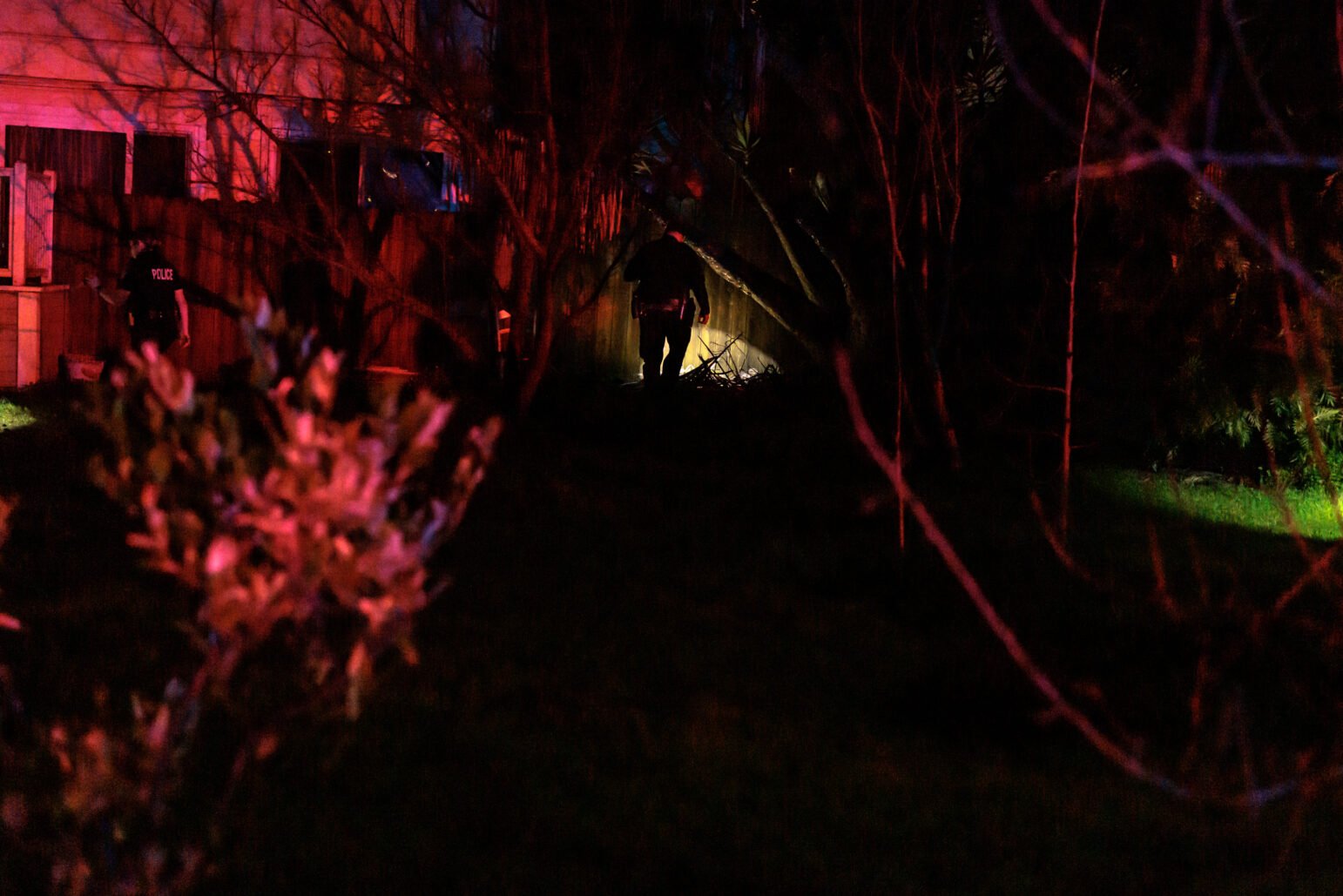
Courtney Mefferd said she took mental notes while watching the footage alongside her family members and their lawyer in December, stopping to rewind and replay the video multiple times. She said it was sickening to hear her uncle gasping for breath with no apparent response from Callinan.
“That was so disturbing to me. It gave me chills. It flipped my stomach,” she said. “It haunts me still to this day.”
On the anniversary of her uncle’s death in December, Courtney Mefferd and a family friend, Bridget Doherty, placed candles, balloons, and photos of Darryl Mefferd near a stairwell outside the Sutter Solano emergency department where Callinan detained Mefferd eight years before. It was the first vigil that Courtney Mefferd held in her uncle’s memory — a chance to remember the man who made seafood pasta on her birthday and dreamed of pursuing his passion for cooking with a new job at a waterfront Vallejo restaurant.
But the gathering was also a chance to celebrate the recent revelations and reckoning around her uncle’s death, she said.
“I was able to smile and cry at the same time,” Courtney Mefferd said. “Because his story is told, his truth is out.”


